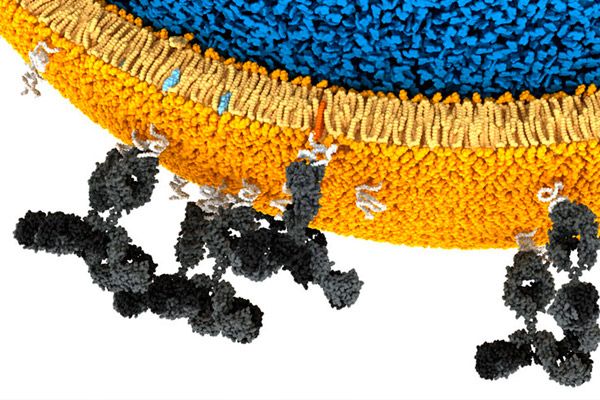Liposomes - the future of medicine
Last reviewed: 23.04.2024

All iLive content is medically reviewed or fact checked to ensure as much factual accuracy as possible.
We have strict sourcing guidelines and only link to reputable media sites, academic research institutions and, whenever possible, medically peer reviewed studies. Note that the numbers in parentheses ([1], [2], etc.) are clickable links to these studies.
If you feel that any of our content is inaccurate, out-of-date, or otherwise questionable, please select it and press Ctrl + Enter.

An international research group, which also included specialists from the Moscow Institute of Physics and Technology, published a review of liposomes (microscopic capsules that were used in pharmacology and medicine) in one of the scientific journals.
The group of scientists was headed by professor of private research university in Boston Vladimir Torchilin, in his article the experts shared the main achievements in the field of work with liposomes, as well as the prospects of their use.
Liposomes are mixoscopic membranes whose walls are similar to the cell membrane. They were first obtained more than 50 years ago. In the 1970s, scientists tried to use liposomes for the supply of drugs, and now this method of treatment is used in many diseases, including oncological tumors.
A lot of articles have been written about liposomes, researchers of the whole world continue to study them, and in the new article of the Torchilin group the main achievements in this field, in particular, modern technologies for obtaining liposomes, their advantages and disadvantages, are described, the main types that have different structures walls, as well as ways of drug delivery with liposomes (the drug can be released slowly or immediately after interaction with a certain type of cells).
A method has been developed that allows delivering drugs directly to the inflammatory focus, the so-called "targeted delivery of substances", which scientists pay special attention to, since it is believed that this particular method of treatment will become the basis of future medicine.
For example, targeted delivery for oncology will help to significantly reduce the manifestation of adverse reactions of the body, even when using extremely toxic agents.
In addition, liposomes are now used to develop a new dosage form of a widely used anti-inflammatory drug - Diclofenac. Virtually all drugs have different forms, while the same can be produced in different - syrup, tablets, suspension, etc.

If, for example, take Diclofenac, put it in liposomes, supplement with substances that increase the permeability of the skin and make it in the form of an ointment, it will be more effective, in comparison, with what is used today. Anti-inflammatory nonsteroidal agents (diclofenac, ibuprofen, paracetamol) are part of most pain relievers that are dispensed without a prescription, so the use of liposomes in this area has great prospects.
Also liposomes can increase the effectiveness of anesthetics, which will be delivered directly to the nerve endings.
Now there are a number of experimental drugs against cancer, which at the first stages of the study show good efficacy.
Also in the article of the research group, there was briefly mentioned the use of liposomes in other areas, besides pharmacology.
For example, liposomes are used for diagnosis or research tests, using them to deliver special labels. A liposome gel was also developed for the chemical analysis of substances, which consists of many microscopic capsules with signaling molecules.
 [1], [2], [3], [4], [5], [6], [7], [8], [9], [10], [11], [12], [13], [14],
[1], [2], [3], [4], [5], [6], [7], [8], [9], [10], [11], [12], [13], [14],
